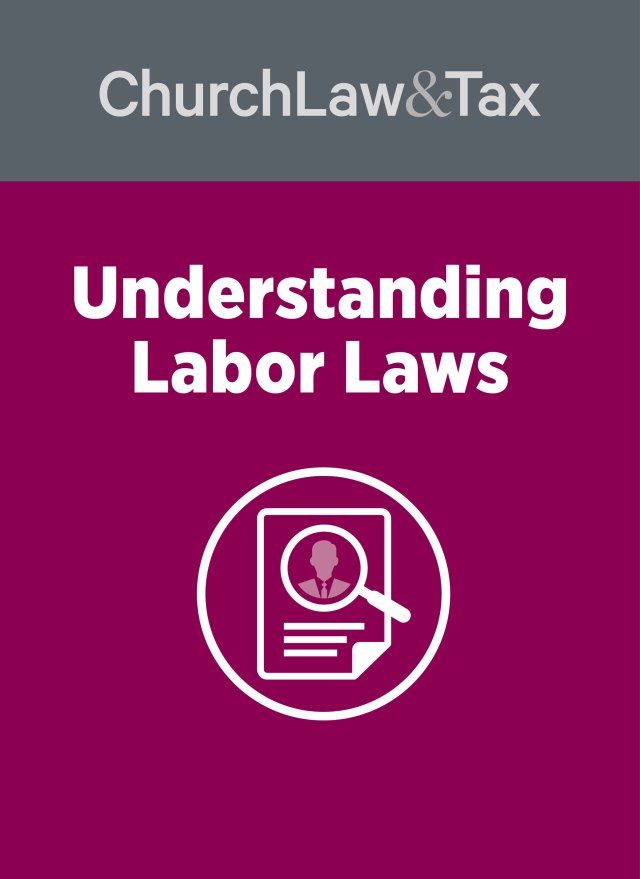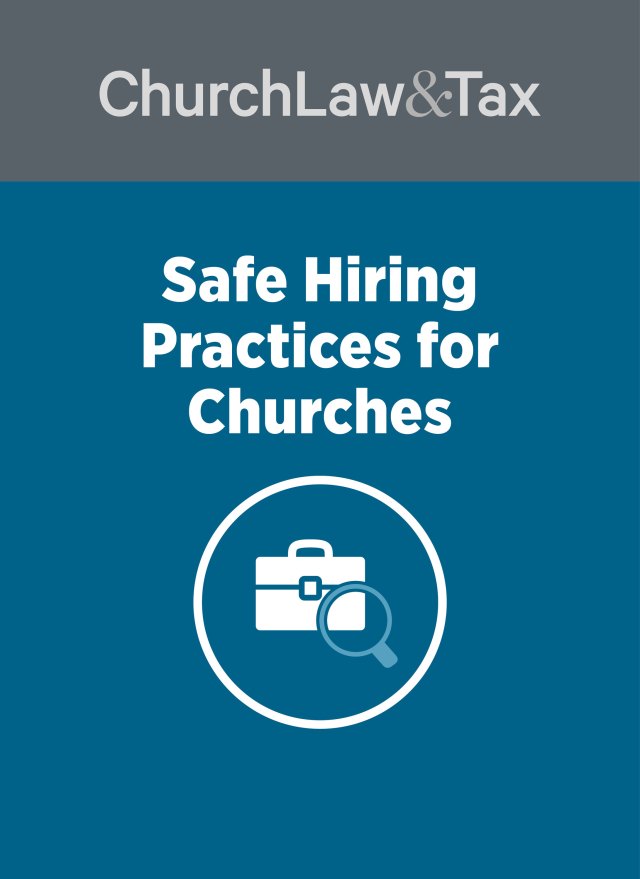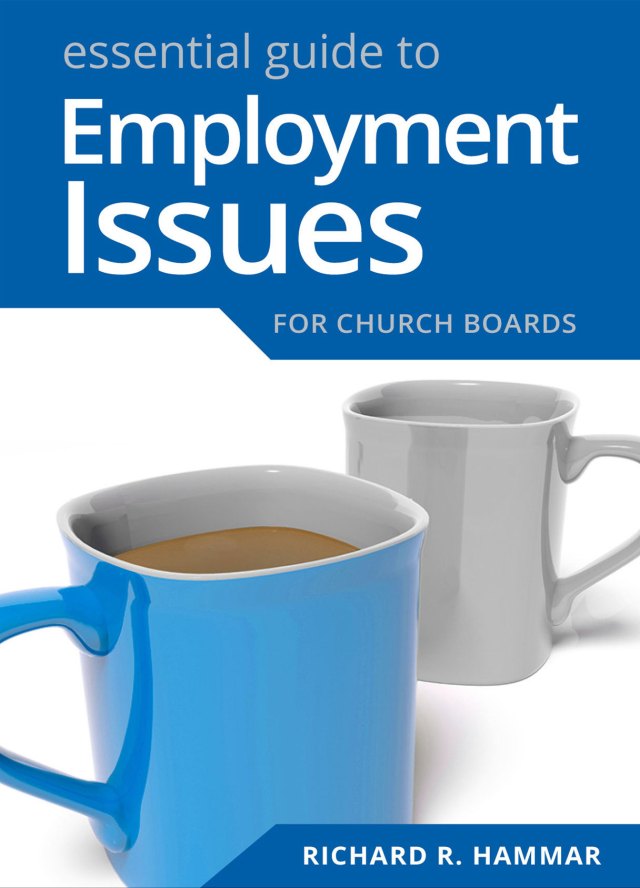• Key point 8-08.2. Sexual harassment is a form of sex discrimination prohibited by Title VII of the Civil Rights Act of 1964. It consists of both “quid pro quo” harassment and “hostile environment” harassment. Religious organizations that are subject to Title VII are covered by this prohibition. An employer is automatically liable for supervisory employees’ acts of harassment, but a defense is available to claims of hostile environment harassment if they have adopted a written harassment policy and an alleged victim fails to pursue remedies available under the policy. In some cases, an employer may be liable for acts of sexual harassment committed by nonsupervisory employees, and even nonemployees.
The Civil Rights Act of 1964
* A federal appeals court ruled that in some cases ministers can pursue sexual harassment claims against an employing church without violating the first amendment. A woman (Pastor Ruth) served as associate pastor of a church for one year. Shortly after assuming this position, she claimed that the church’s senior pastor began sexually harassing her and creating a “hostile work environment.” Pastor Ruth made a formal complaint of sexual harassment to the church, which she claimed took no action to stop the harassment or alleviate the hostile working environment. She also claimed that the senior pastor retaliated against her by relieving her of certain duties, verbally abusing her and otherwise engaging in intimidating behavior. Again, the church, which knew or should have known of the senior pastor’s behavior, failed to act.
Pastor Ruth filed a charge of discrimination with the federal Equal Employment Opportunity Commission (EEOC) and received a “right-to-sue letter.” Under current EEOC procedure, when an employee files a claim of discrimination against an employer, the EEOC is required to evaluate the claim within 180 days. If it determines that the claim is legitimate, it will immediately attempt to reach a settlement or conciliation between the parties. If it determines that there is “no cause” for the claim, or (as happens in most cases) it simply fails to reach a decision regarding an employee’s claim within 180 days, it may issue the employee a “right-to-sue letter.” Such a letter informs the employee that his or her claims may be pursued in federal court. It is not necessarily a finding by the EEOC that there is any validity or basis to the claim.
The church placed Pastor Ruth on unpaid leave and later terminated its employment relationship with her. A regional denominational agency (the presbytery) later informed Pastor Ruth that it had decided against permitting her to circulate her church resume, effectively preventing her from acquiring other pastoral employment in any church in the same denomination anywhere in the country. Pastor Ruth responded to this action by filing a second charge of discrimination with the EEOC alleging unlawful retaliation. She received a second right-to-sue letter. The EEOC issues a right-to-sue letter when it concludes that an employee has a viable claim of employment discrimination under federal law.
Pastor Ruth sued her church in federal court, claiming that the church violated Title VII of the Civil Rights Act of 1964 which bars covered employers from engaging in sexual harassment or “retaliation” against employees. She asked the court to award her back pay, “front pay” (for lost future wages), and damages for emotional distress and harm to her reputation. She also asked the court to order the presbytery to allow her to circulate her resume among other churches. The court dismissed the lawsuit, concluding that any resolution of Pastor Ruth’s claims would interfere with the church’s constitutionally protected right to choose its ministers. Pastor Ruth appealed.
A federal appeals court agreed that to the extent that Pastor Ruth’s claims involve “an inquiry into the church’s decision to terminate her ministry, those claims cannot proceed in civil court and were properly dismissed.” However, the court concluded that she could, consistent with the first amendment, “attempt to show that she was sexually harassed and that this harassment created a hostile work environment” since this would involve “a purely secular inquiry.”
Any employer that is engaged in commerce, and that has 15 or more employees, is subject to Title VII of the Civil Rights Act of 1964. This federal law prohibits employers from discriminating in employment decisions on the basis of race, color, national origin, sex, or religion. Sex discrimination is defined by the Act to include sexual harassment, which is further defined to include (1) “quid pro quo” harassment (conditioning employment opportunities on submission to a sexual or social relationship), and (2) “hostile environment” harassment (the creation of an intimidating, hostile, or offensive working environment through unwelcome verbal or physical conduct of a sexual nature).
The court noted that there are two ways for an employer to be liable for “hostile environment” sexual harassment:
(1) An employer is liable for a hostile environment that “culminates in a tangible employment action.” Pastor Ruth claimed that the hostile work environment created by her senior pastor culminated in a tangible employment action since she was suspended and then terminated, and the presbytery refused to allow the dissemination of her resume to other churches. The court concluded that the ministerial exception prohibited it from assigning liability on this basis since it would directly implicate the church’s practices regarding the employment of clergy.
(2) When no “tangible employment action” has been taken, an employer is nevertheless liable for hostile environment sexual harassment unless it can establish an “affirmative defense” by showing that it exercised reasonable care to prevent and promptly correct any sexually harassing behavior, and the plaintiff unreasonably failed to take advantage of any preventive or corrective opportunities provided by the employer. An employer’s adoption of a sexual harassment policy helps to demonstrate that an employer used reasonable care to prevent harassment, and, an employee’s failure to use a complaint procedure provided by the employer will normally preclude the employee from pursing a sexual harassment claim.
The court concluded that neither the first amendment nor the ministerial exception barred the civil courts from resolving “hostile environment” sexual harassment lawsuits against churches based on this second form of liability. In other words, a church can be found liable for hostile environment sexual harassment unless it can establish an affirmative defense by having adopted a sexual harassment policy and complaint procedure which an employee chose not to follow. The court concluded that this analysis “takes all protected employment decisions out of the equation, thus assuring that the church’s liability under Title VII will not be based on the decisions to suspend [Pastor Ruth], to terminate her employment or to refuse to allow her to circulate her personal information form. Instead, the only relevant decisions implicated here are [the senior pastor’s] supposed decision to harass Pastor Ruth and the church’s decision not to intervene to stop or curtail the sexual harassment …. These alleged decisions to engage in and permit harassment are insufficient to trigger the ministerial exception.” The court concluded,
[There is] no first amendment basis for shielding the church from its obligation to protect its employees from harassment when extending such protection would not contravene the church’s doctrinal prerogatives or trench upon its protected ministerial decisions. Indeed, if we were to adopt a rule that the first amendment bars [Pastor Ruth] from even stating a Title VII claim—out of speculation that the affirmative defense might somehow involve some doctrinal component—we would be affording blanket first amendment protection to churches that unreasonably fail to address clear instances of sexual harassment, such as unwanted sexual advances, sexual intimidation … or barrages of unwelcome sexual commentary and pornography, even when no protected ministerial choice or church doctrine is in fact involved …. Accommodating Title VII’s mandate and the first amendment’s strictures does not mean peremptorily dismissing all sexual harassment claims brought by ministers against churches.
The court’s decision was by a 3-judge panel. One of the judges filed a lengthy dissent in which he concluded, “The majority’s decision has approved part of a misconceived lawsuit which, with all respect, is an unconstitutional violation of and an invasion by the federal government into the church’s core prerogatives and autonomy. If the wall between church and state is to be respected, it cannot be a one-way wall.”
Application. This is the first court to recognize a breach in the well-established ministerial exception to employment discrimination laws. This exception, until now, has meant that the civil courts cannot resolve employment discrimination claims brought by ministers against an employing church. The court in this case concluded that ministers should be permitted to have their claims of “hostile environment” sexual harassment resolved by the civil courts so long as such claims are not based on adverse employment actions and do not in any way implicate hiring decisions. Under this type of liability, a church (like any employer) is liable for hostile environment sexual harassment unless it can establish an “affirmative defense” (that it adopted a sexual harassment policy, including a complaint procedure, that the plaintiff elected not to follow). It remains to be seen if other courts will follow this limited exception to the “ministerial exception.”
This case represents a ruling by the ninth circuit federal court of appeals, which means that the decision will be binding in the states of Alaska, Arizona, California, Hawaii, Idaho, Montana, Nevada, Oregon, and Washington. Churches in these states, and in any other state that may follow this ruling, should be sure they have adopted a sexual harassment policy since in most cases such a policy will be a prerequisite to establishing an affirmative defense to a hostile environment sexual harassment claim. Elvig v. Calvin Presbyterian Church, 375 F.3d 951 (9th Cir. 2004).
Resource. Tips for drafting a sexual harassment policy can be found in a feature article in the September-October 1998 edition of Church Law & Tax Report, or in section 8-08.2 of Richard Hammar’s book, Pastor, Church & Law (3rd ed. 2001).
© Copyright 2005 by Church Law & Tax Report. All rights reserved. This publication is designed to provide accurate and authoritative information in regard to the subject matter covered. It is provided with the understanding that the publisher is not engaged in rendering legal, accounting, or other professional service. If legal advice or other expert assistance is required, the services of a competent professional person should be sought. Church Law & Tax Report, PO Box 1098, Matthews, NC 28106. Reference Code: m31 c0305




